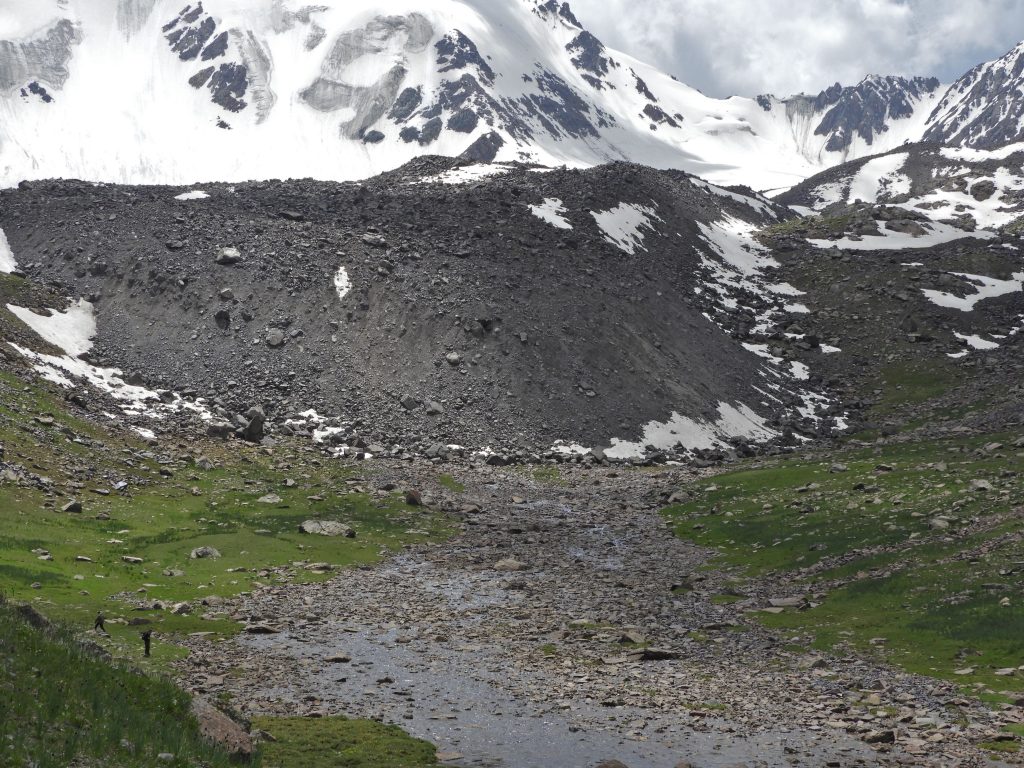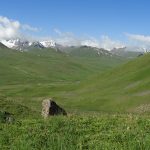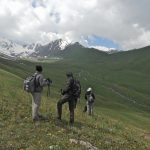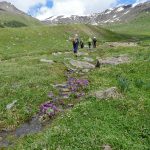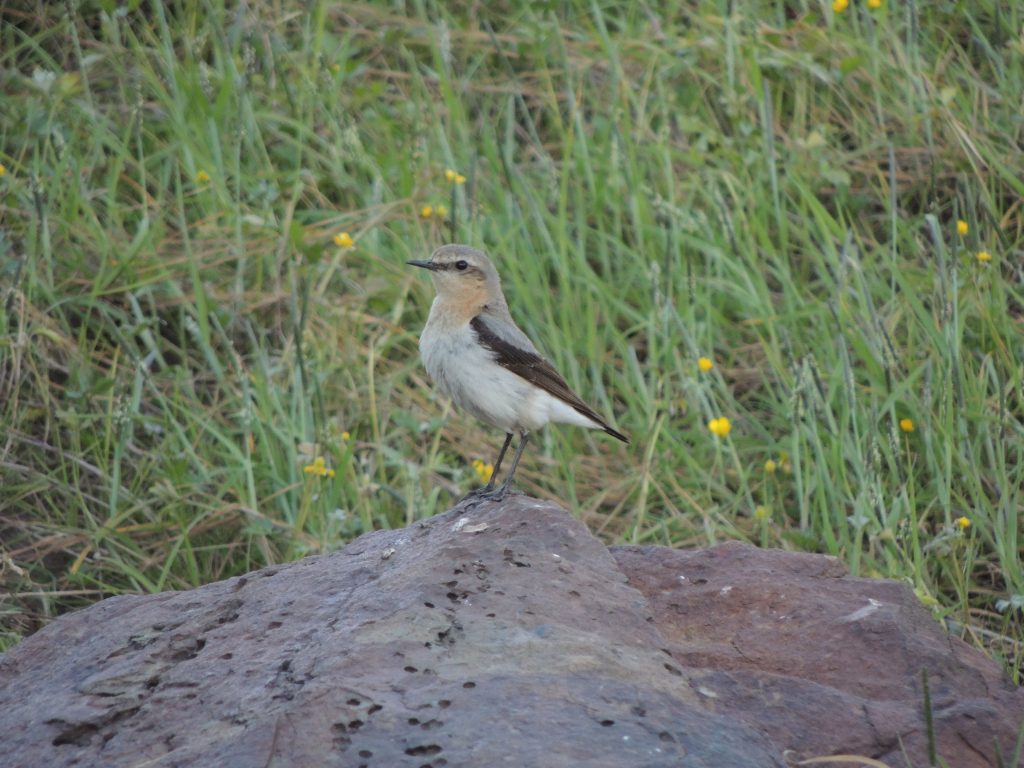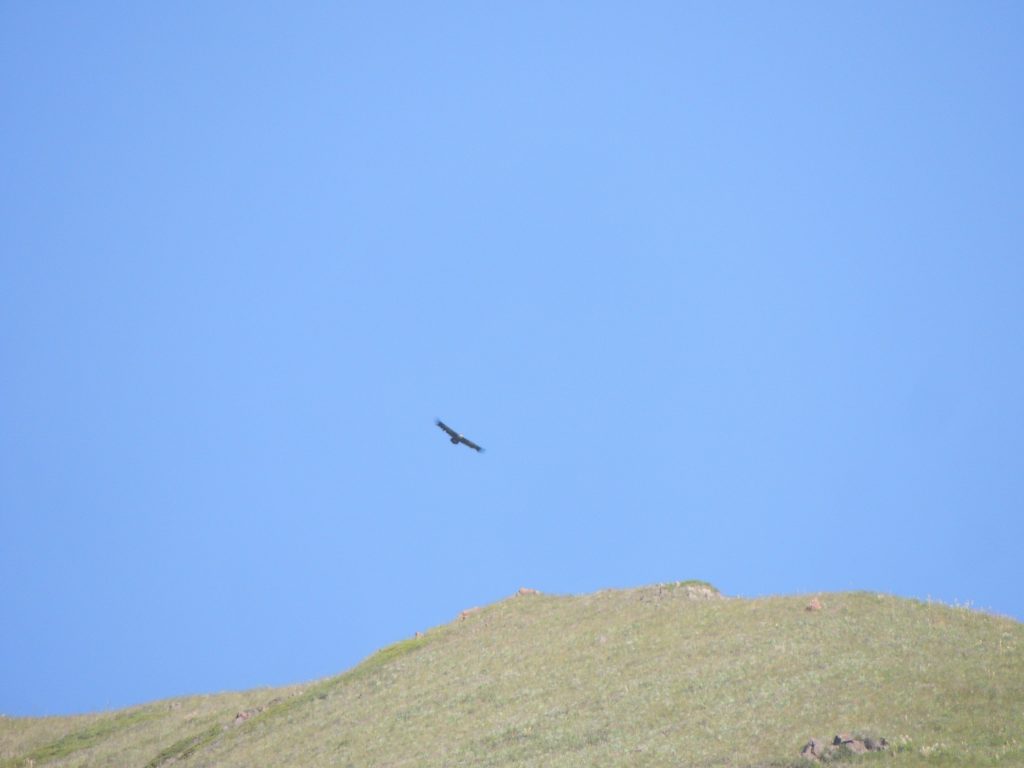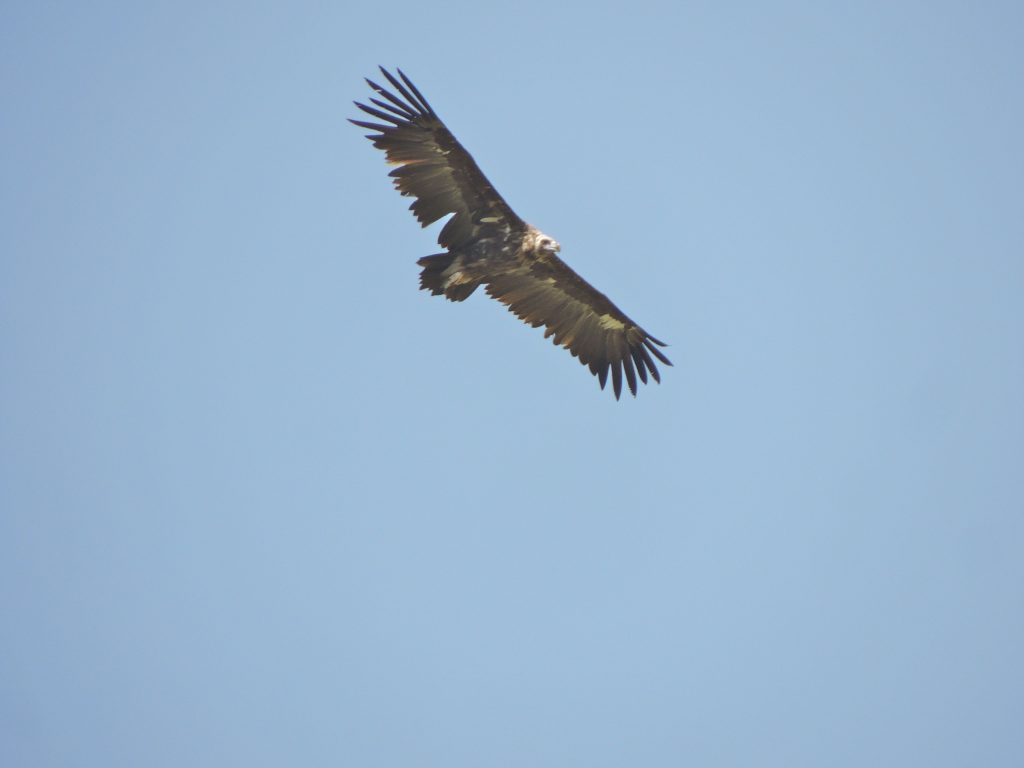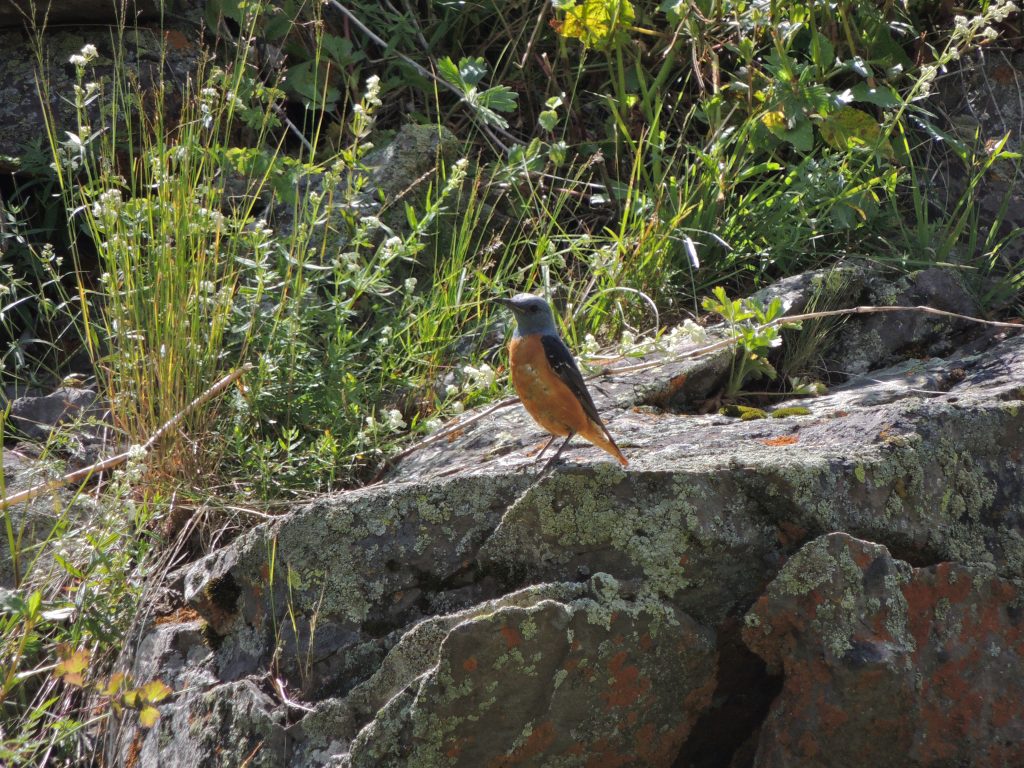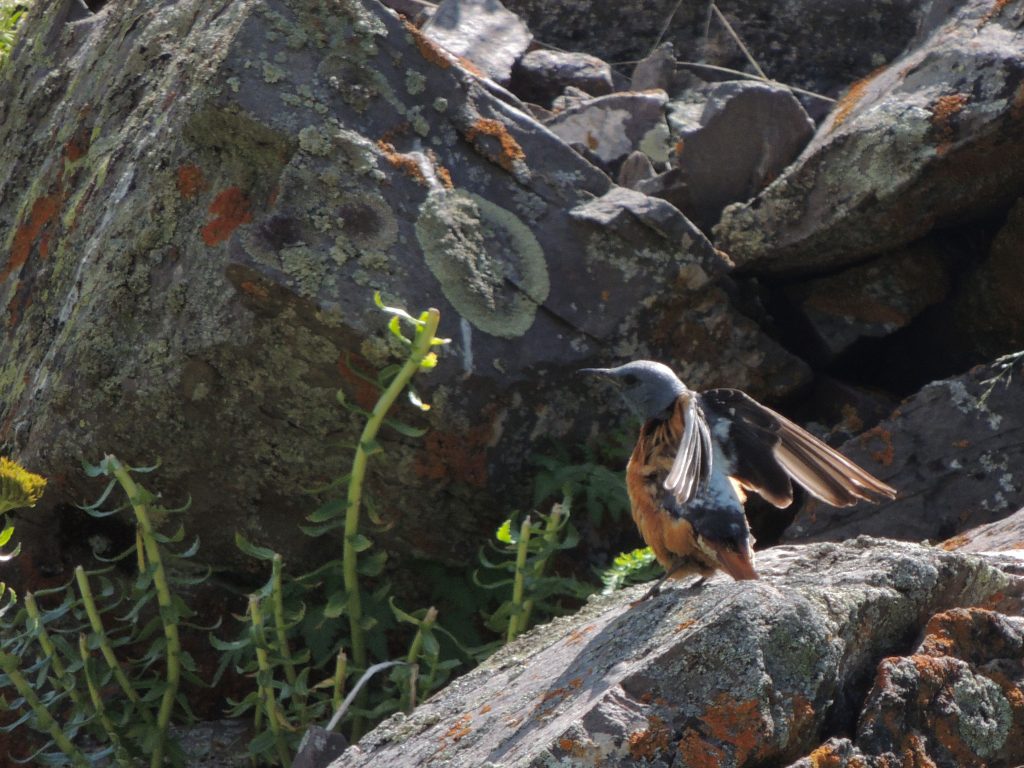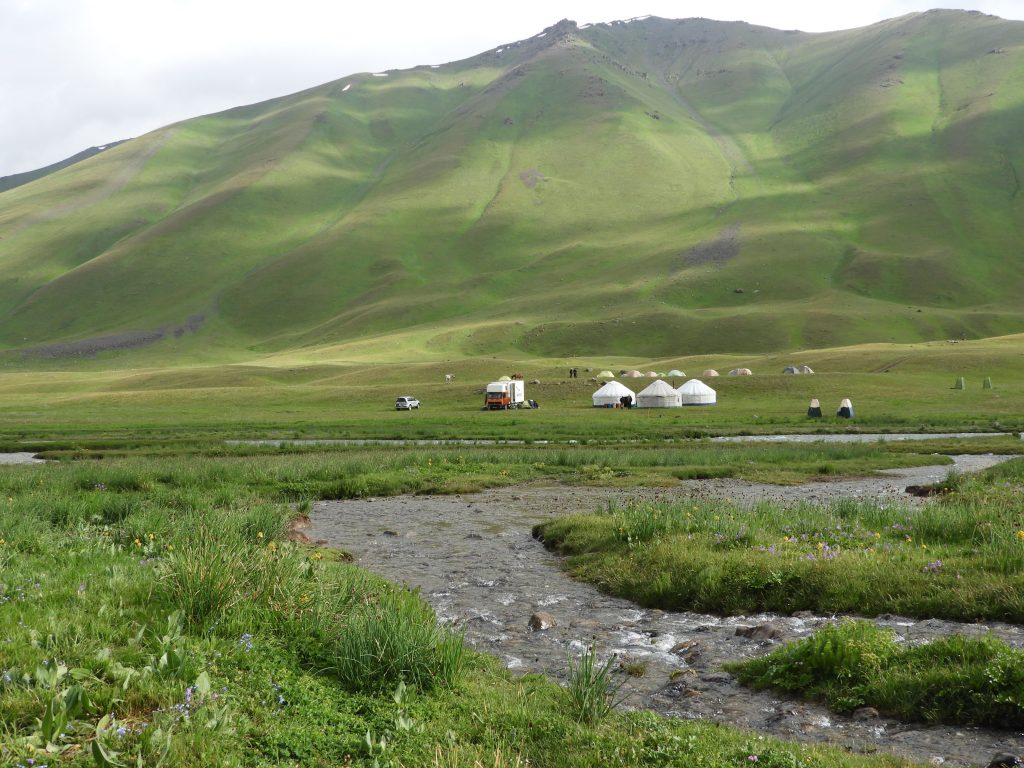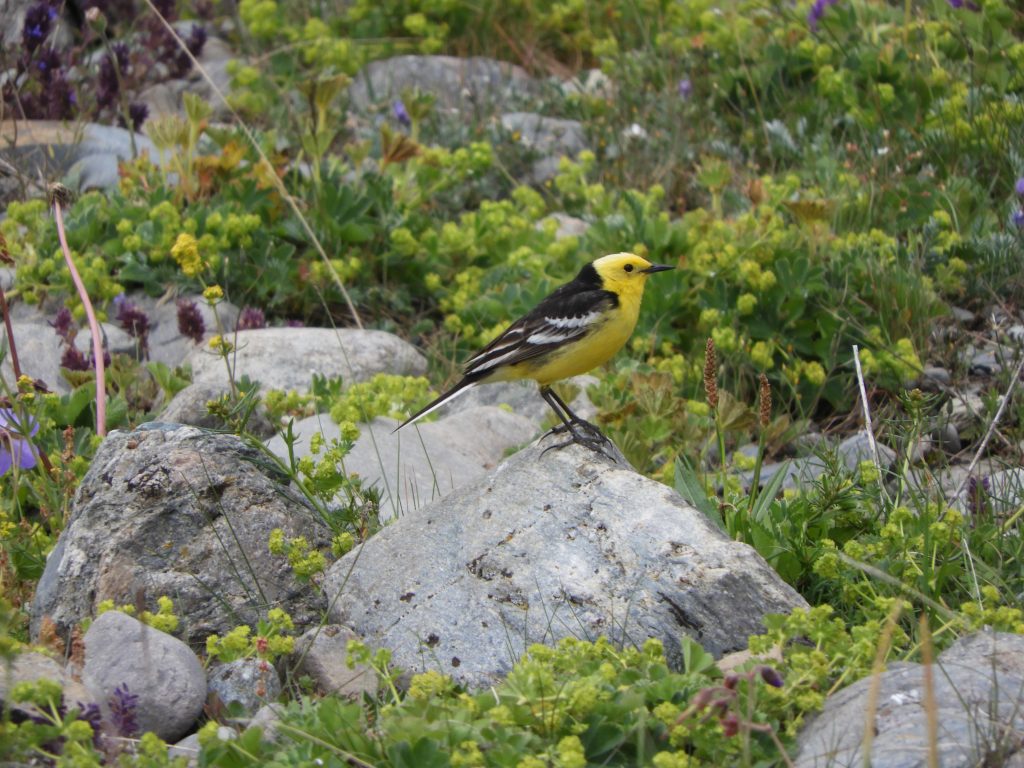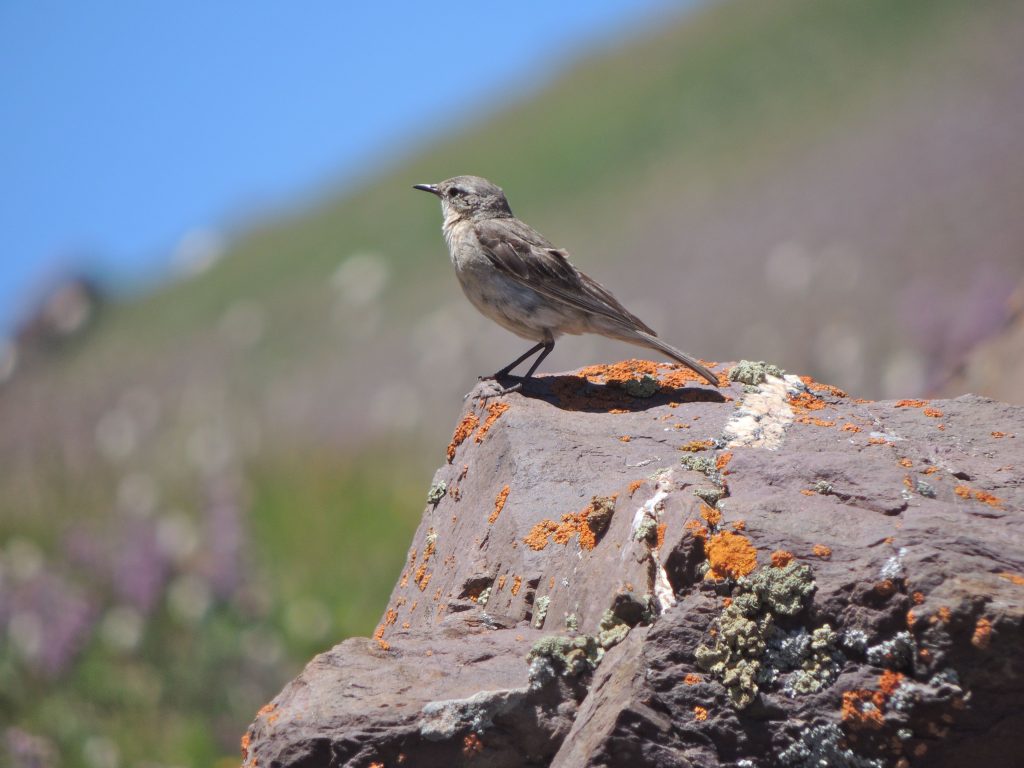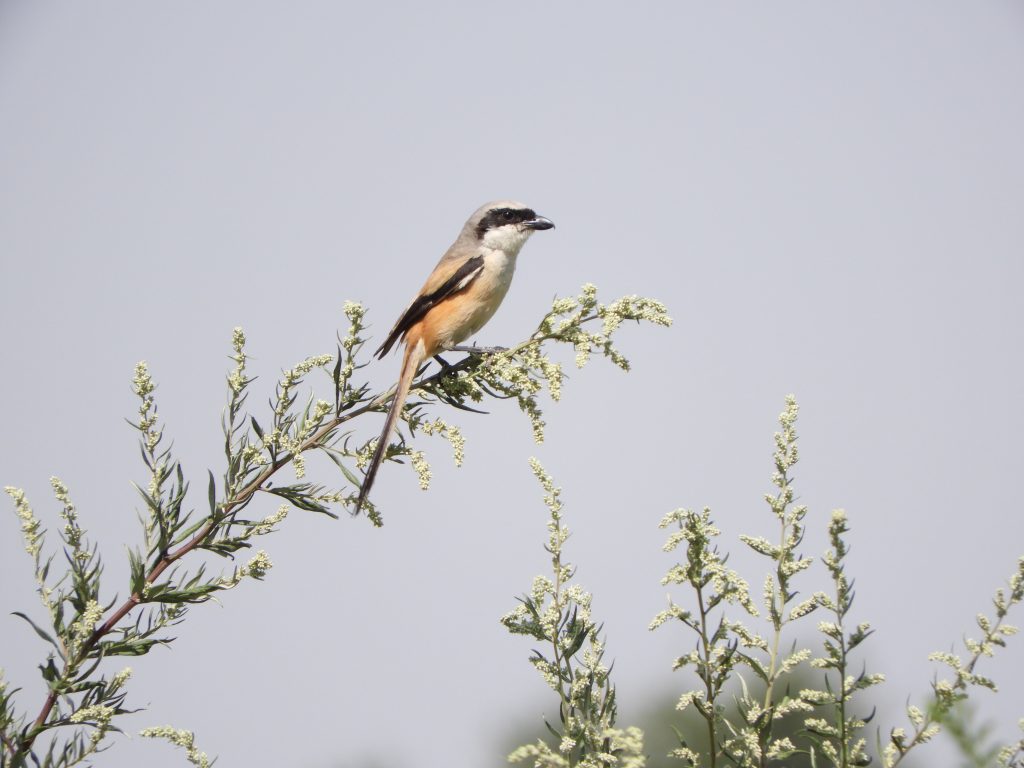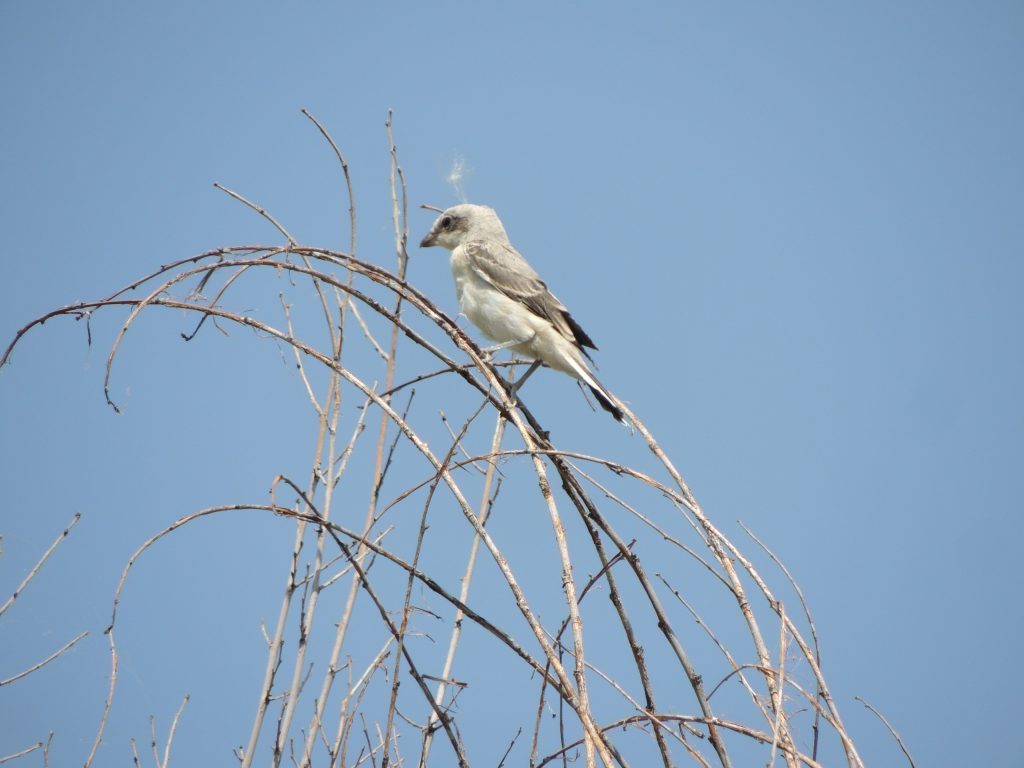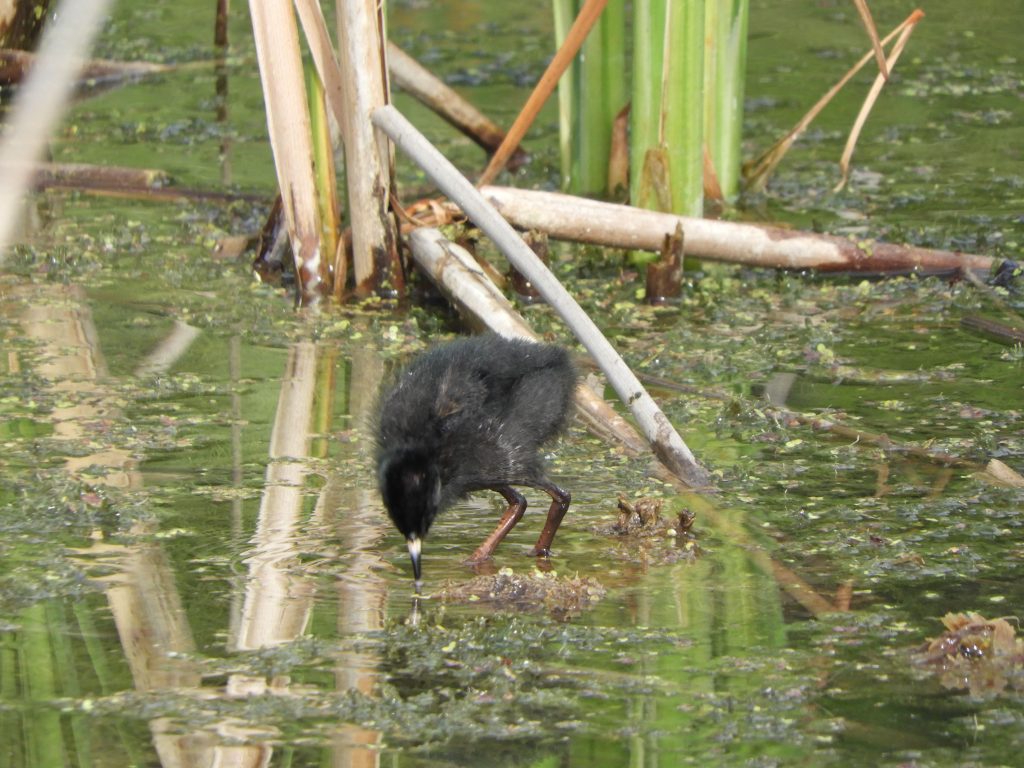July 16 and 18 2018. Tien Shan Mountains, Kyrgyzstan. This month in Kyrgyzstan was not just about birds, I have many other interests. Participation on the Snow Leopard expedition was simply an exciting opportunity that caught my imagination. I was just one of a team of volunteers coordinated by Biosphere Expeditions to help Ukrainian scientist, Dr. Volodya Tytar with field work. Our task was to hike up selected remote valleys and look for evidence of the presence of Snow Leopards: prey species, footprints, and scat primarily.
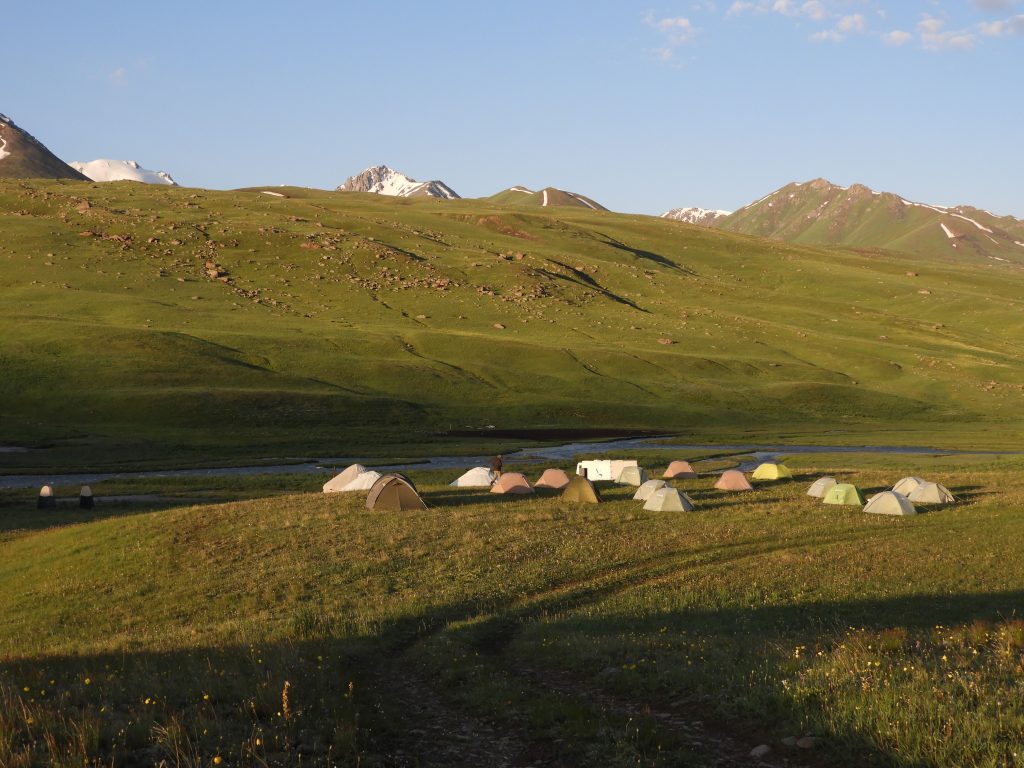
It was an exhilarating and awe-inspiring opportunity to go somewhere I’d never imagined I would. The team was a happy and cooperative group from Germany, Holland, Britain, Australia, USA and Canada. Our guides and cook were local Kyrgys, lovely people. Living conditions were comfortable; we were well-fed and provided necessary transportation and field equipment like compasses, radios and GPS (or sat-nav). It was up to us to participate in it as an expedition not as a holiday; that wasn’t difficult.
Each day involved hiking another tributary valley to its glacial head. It was always rough going and tiring although clearly easier for our two twenty-something year-olds. But hard or not it was endlessly and compellingly interesting: the snow-topped mountains, the loneliness, the sky, majestic views and flowers everywhere. Scattered families of nomadic herders turned their sheep, goats, cattle and horses out to graze the deep grasses around us. The yurt homesteads were managed by women, and the men, on horseback, with their lanky Borzoi dogs looked after the livestock.
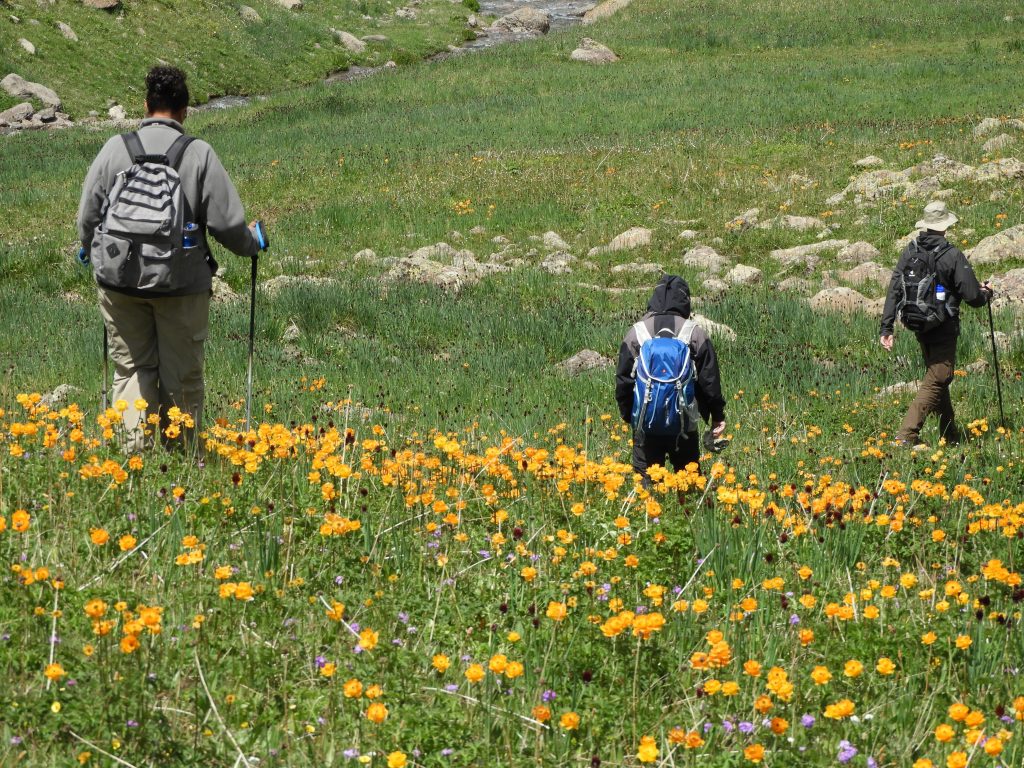
Expanses of Globeflowers (Trollius altaicus) turned hillside meadows orange in sweeps, soggy low spots were sometimes shin deep in spectacular purple primroses (Primula nivalis) and several species of wild onion (Allium). There were rushing streams to cross, boulder fields to navigate, wide meadows and always the literally breathtaking hike upwards.
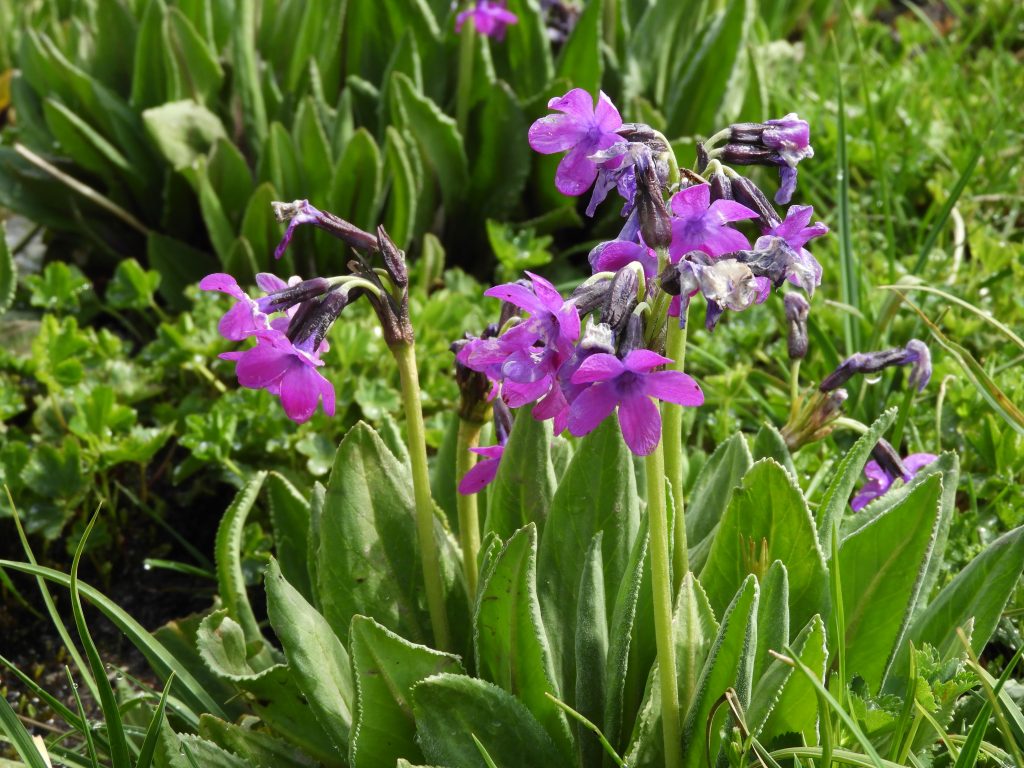
We’d pause to scan the high slopes and rocky ridges looking for Ibex or Argali, both prey for Snow Leopards. We knew there was not a prayer we’d spot a Snow Leopard in the endless walls, fractured crags and mountain debris. But for Ibex or Argali, there was every reason to scan and scrutinise closely.
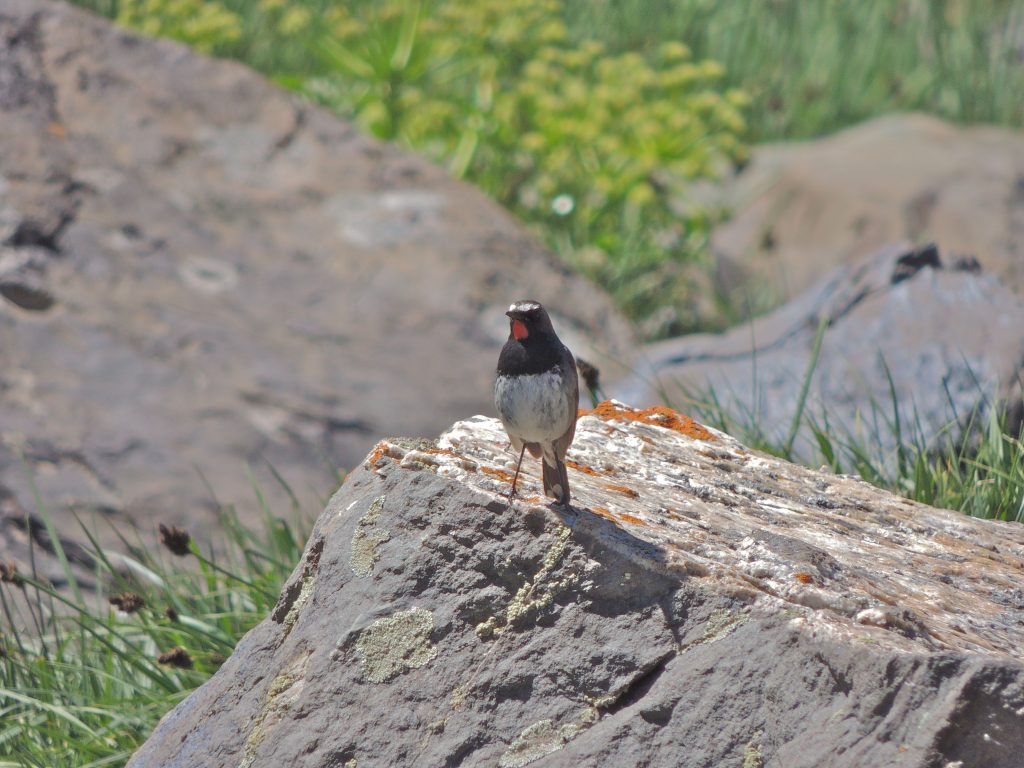
At a breath-catching pause in today’s ascent we saw a small bird flitting from one lookout rock to another. It was small, bob-tailed, unlike any of the more common wheatears, larks or wagtails and quite hard to follow. It was almost too far away from us, so a challenge even with good binoculars. Only two of us in today’s group had any particular interest in birds and I was about to shrug it off when a glimpse, a sudden flash, of iridescent ruby triggered the identification, a Himalayan (or White-tailed) Rubythroat. Its flashy red chin is so distinctive making it unlike anything else in the field guide, it was an easy call.
I encountered another rubythroat two days later in another valley. I was crouched on a low rock absorbed in watching a busy group of young Mountain Weasels explore their home range. I must have been uncomfortably close to the rubythroat’s nest or fledglings because, while it flew from vantage point to vantage point, it was never far away and watched me closely.
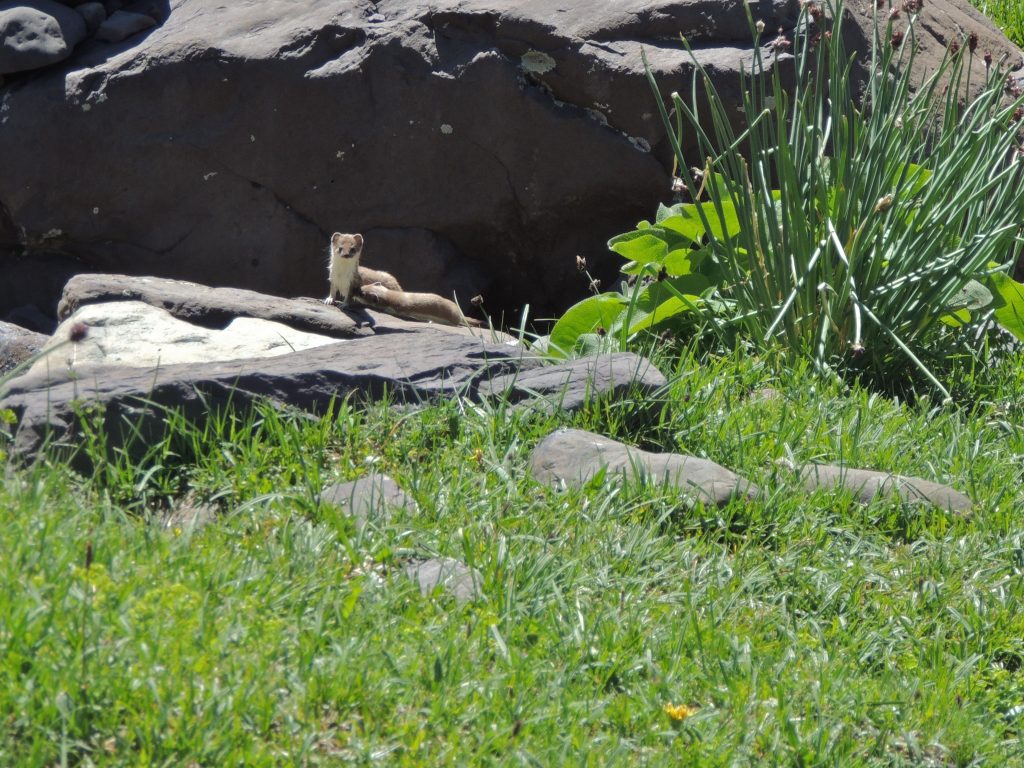
Quiet inaction is very often highly productive for seeing birds well and on this same little bit of valley I enjoyed long, privileged views of Güldenstädt’s Redstart, Altai Accentor and Isabelline Wheatears, all great birds although none could quite match the Himalayan Rubythroat.
Dr. Tytar, was excited and intrigued by the rubythroats, he felt these sightings indicated an altitudinal range extension for the species (at about 3200M), perhaps a result of climate change. He was happy and so was I, blissfully.
